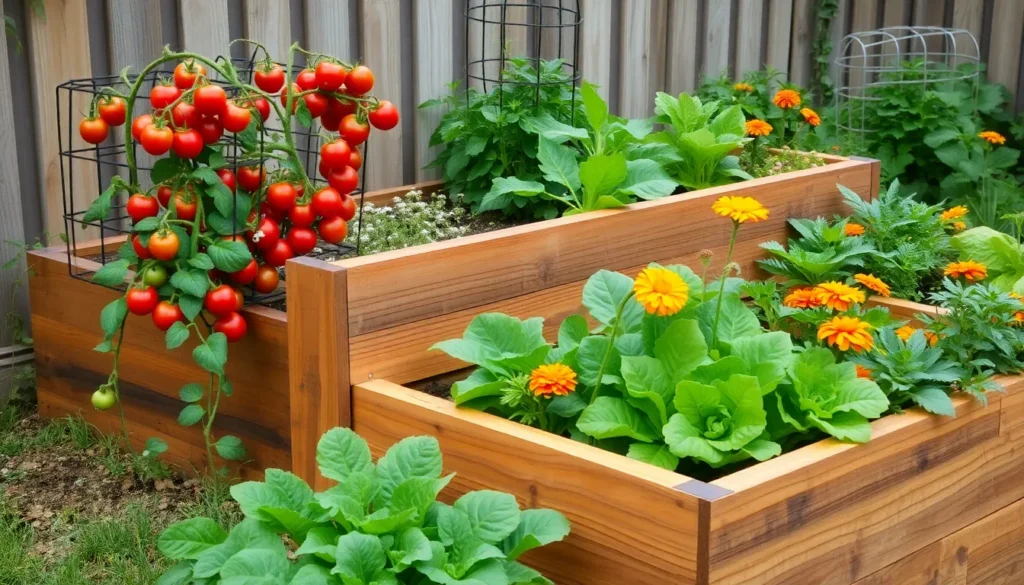Welcome to a gardener’s paradise, where creativity and practicality bloom together in the form of DIY Raised Garden Bed Ideas! Whether you’re just planting your first seeds or have been nurturing your green oasis for years, this guide promises to transform your gardening space into a thriving, beautiful sanctuary. By embracing the art of raised garden beds, you’ll not only elevate your plants but also your gardening experience, unlocking new potential for vibrant growth and bountiful harvests.
In this collection, you’ll discover a treasure trove of innovative designs that cater to every skill level and garden size. These ideas are more than just aesthetically pleasing; they are crafted to enhance your gardening success with improved soil health, better drainage, and easier maintenance. As you explore these pages, you’ll gain the confidence to construct and customize your own raised beds, ensuring your plants thrive like never before. Get ready to dig in and cultivate a garden that delights both the eyes and the soul, reaping the joyful rewards of your labor.
Choose Durable Wood Materials
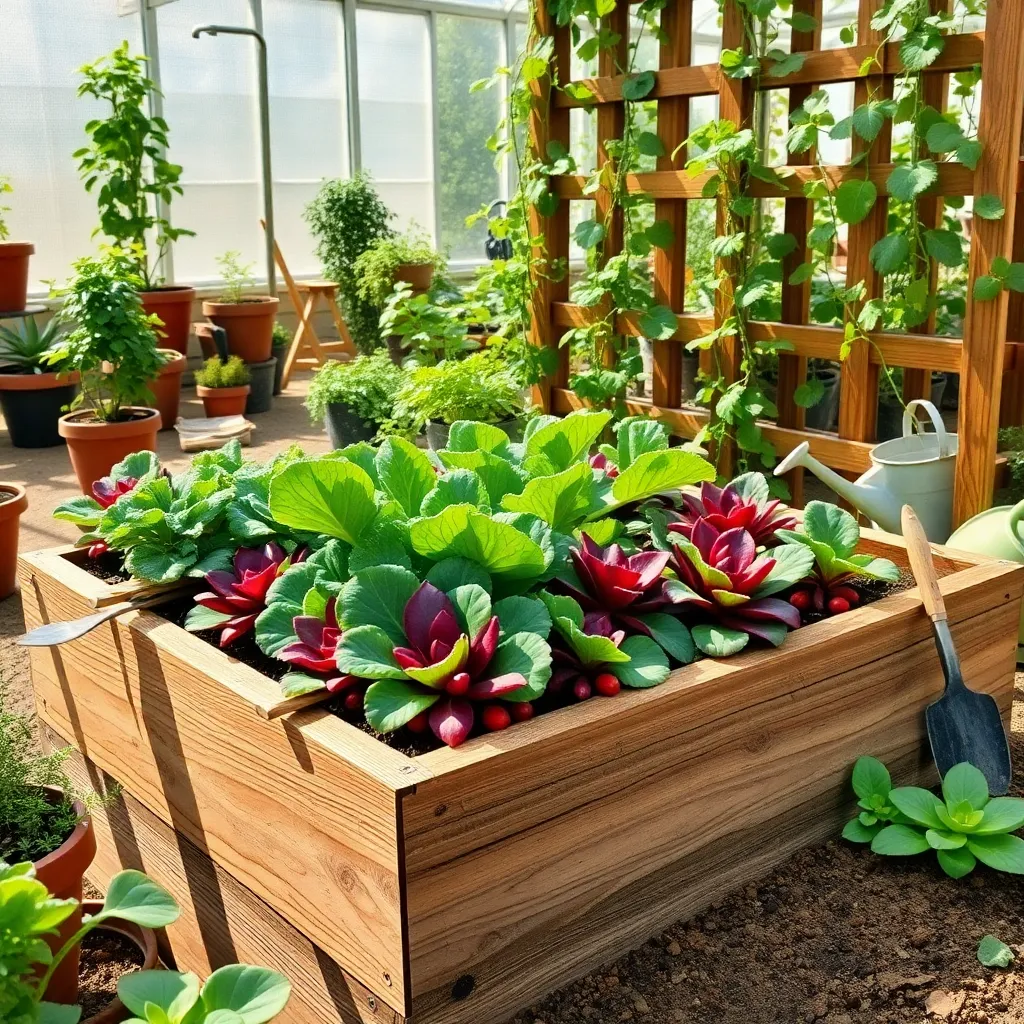
When building a raised garden bed, selecting the right wood is crucial for longevity and plant health. Opt for durable and naturally rot-resistant woods like cedar or redwood, which can withstand the elements better than untreated softwoods.
For those on a budget, pressure-treated wood is an option, but ensure it’s safe for vegetable gardens. Look for wood labeled as safe for vegetable use, as it won’t leach harmful chemicals into the soil.
To further extend the life of your wooden garden bed, consider applying a non-toxic wood sealant. This will help protect against moisture and pests without compromising the soil quality or plant safety.
Advanced gardeners might explore using composite wood materials, which blend wood fibers and plastic. These environmentally friendly options offer exceptional durability and require minimal maintenance over the years.
Ensure Proper Drainage Holes
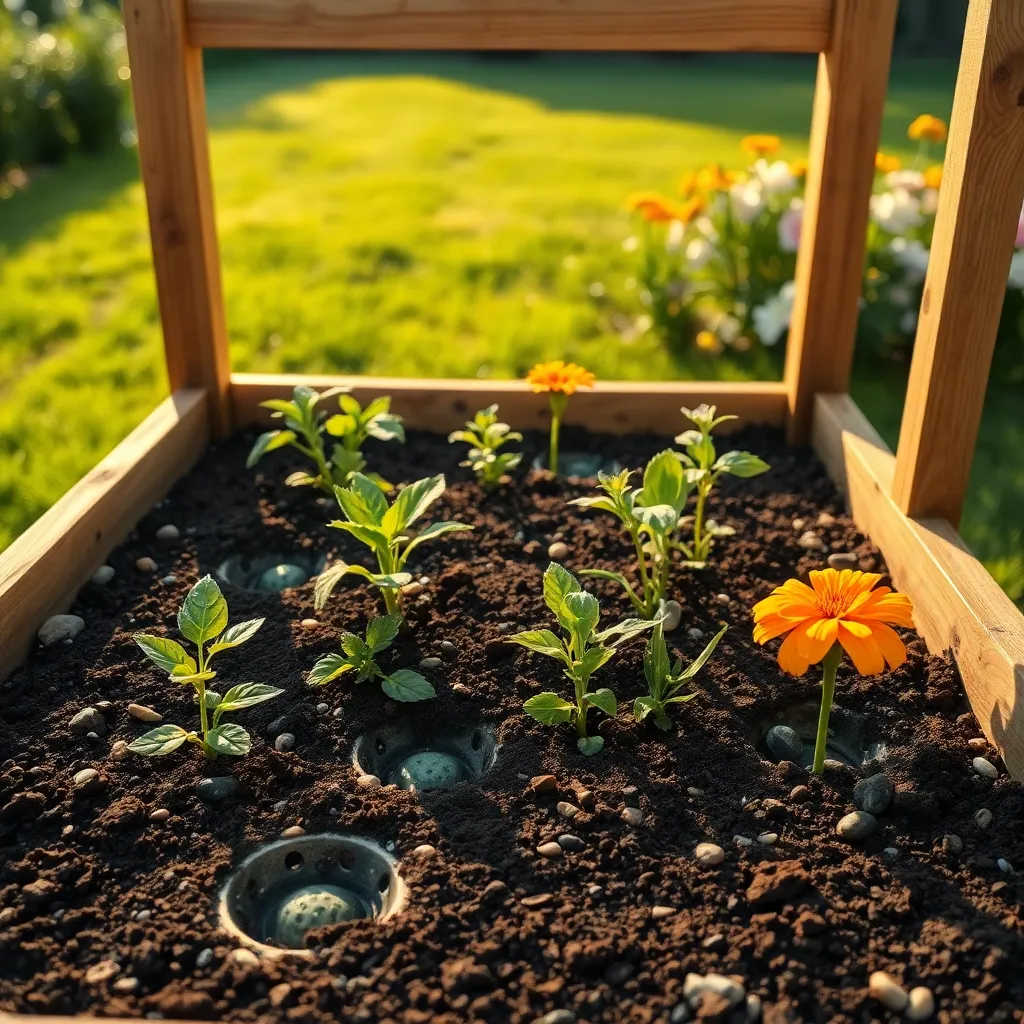
Ensuring proper drainage in your raised garden bed is crucial for healthy plant growth. Without adequate drainage, plants may suffer from root rot due to standing water, which can be detrimental to their health.
Start by drilling multiple holes in the bottom of your raised bed to allow excess water to escape. Ideally, these holes should be spaced 6 to 12 inches apart, depending on the size of your bed, to ensure even drainage across the entire area.
Consider the type of soil you use, as this will impact drainage as well. A well-draining soil mix usually contains a combination of garden soil, compost, and materials like perlite or sand to improve aeration and prevent waterlogging.
For an advanced tip, line the bottom of your raised bed with a layer of gravel or small stones before adding soil. This layer helps facilitate drainage and prevents soil from blocking the holes, which can be especially useful in regions with heavy rainfall.
Use Quality Soil Mix
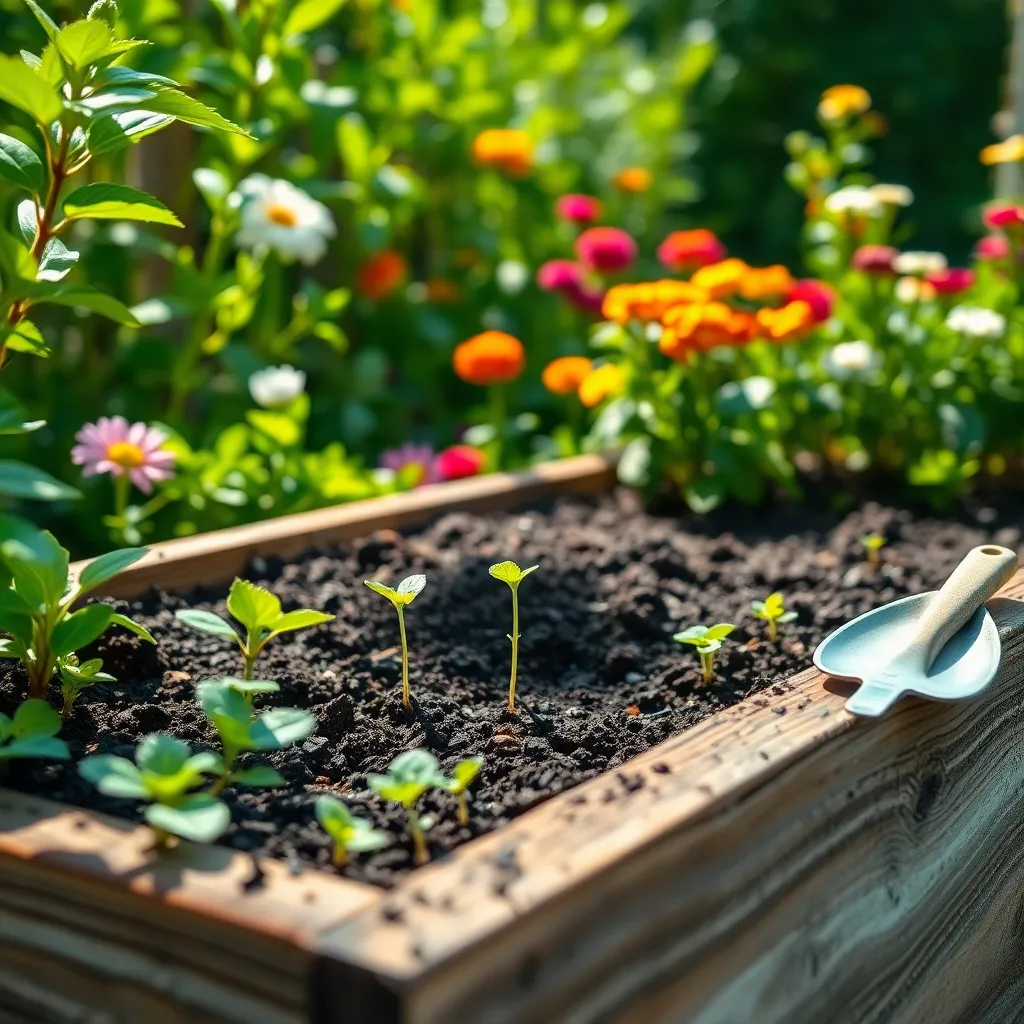
Choosing a quality soil mix is crucial for the success of your raised garden bed. Begin with a blend of topsoil, compost, and a soilless growing medium like peat moss or coconut coir to ensure proper nutrient balance and drainage.
For beginners, a simple mix of 50% topsoil, 30% compost, and 20% soilless medium is an effective starting point. This combination provides essential nutrients and maintains moisture, reducing the frequency of watering.
Experienced gardeners might consider adding specific amendments to enhance soil quality further. Adding perlite or vermiculite can improve aeration and drainage, particularly beneficial for plants that don’t like to sit in waterlogged soil.
When selecting soil, ensure it is free from contaminants and pests, which can hinder plant growth. Opt for organic-certified soil mixes whenever possible, as they provide a healthier environment for both your plants and the ecosystem.
Regularly test your soil to monitor pH levels and nutrient content, especially if you’re growing vegetables or fruits. Adjusting the soil pH with lime or sulfur can be necessary to meet the specific requirements of different plants.
Incorporate Weed Barrier Fabric
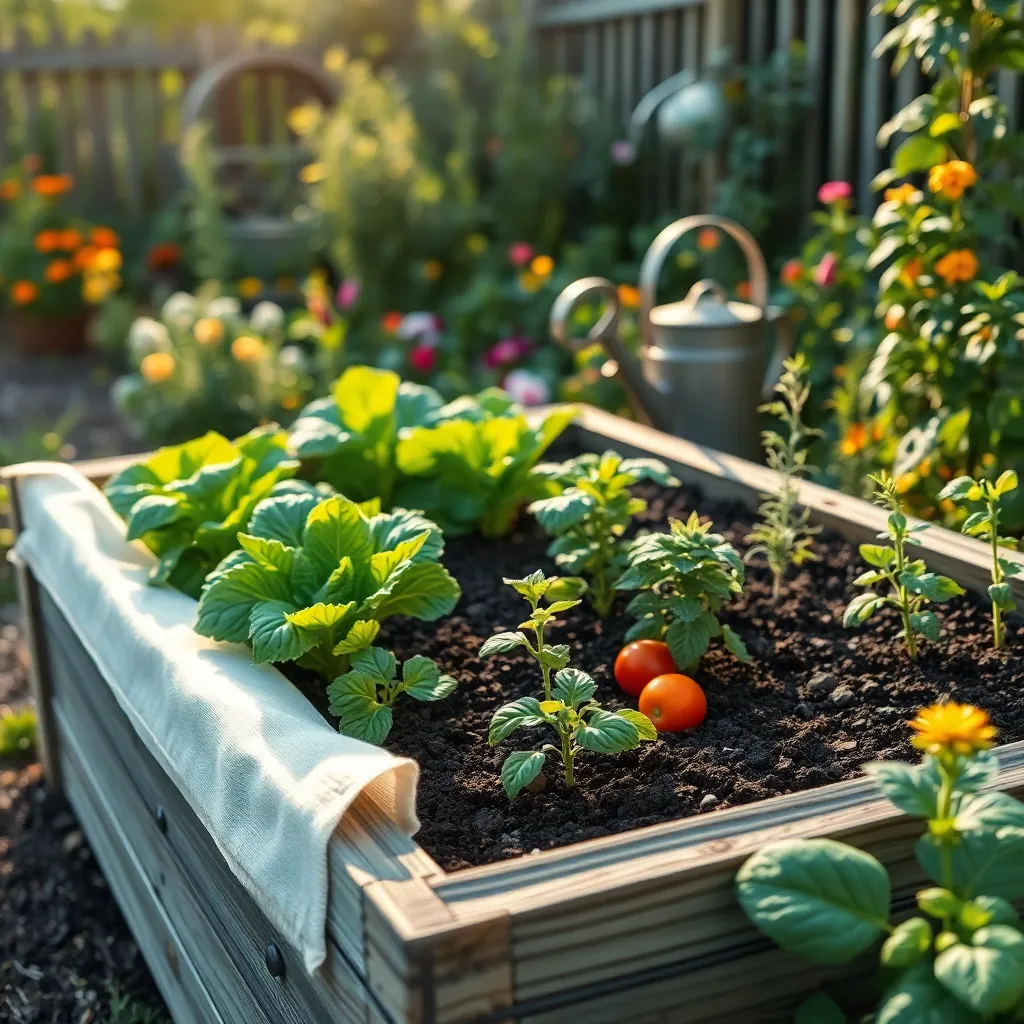
One effective way to keep weeds at bay in your raised garden bed is to incorporate weed barrier fabric. This fabric acts as a physical barrier, preventing sunlight from reaching the soil, which is essential for weed germination.
Before laying the fabric, ensure your bed is free of existing weeds and debris. It is crucial to lay the fabric smoothly, ensuring it covers the entire bed, including edges, to prevent weeds from sneaking through.
Cut small slits or holes in the fabric where you plan to plant your vegetables or flowers. This ensures that your plants have room to grow while still suppressing weeds in other areas.
For added effectiveness, cover the fabric with a layer of mulch, which provides additional weed suppression and helps retain soil moisture. Consider using organic mulches such as straw or wood chips, as they also decompose over time, enriching the soil.
While weed barrier fabric is excellent for controlling weeds, remember that it can limit the movement of beneficial insects and microorganisms. Monitor the soil health regularly and adjust your gardening practices as needed to maintain a thriving garden ecosystem.
Opt for Modular Design Plans
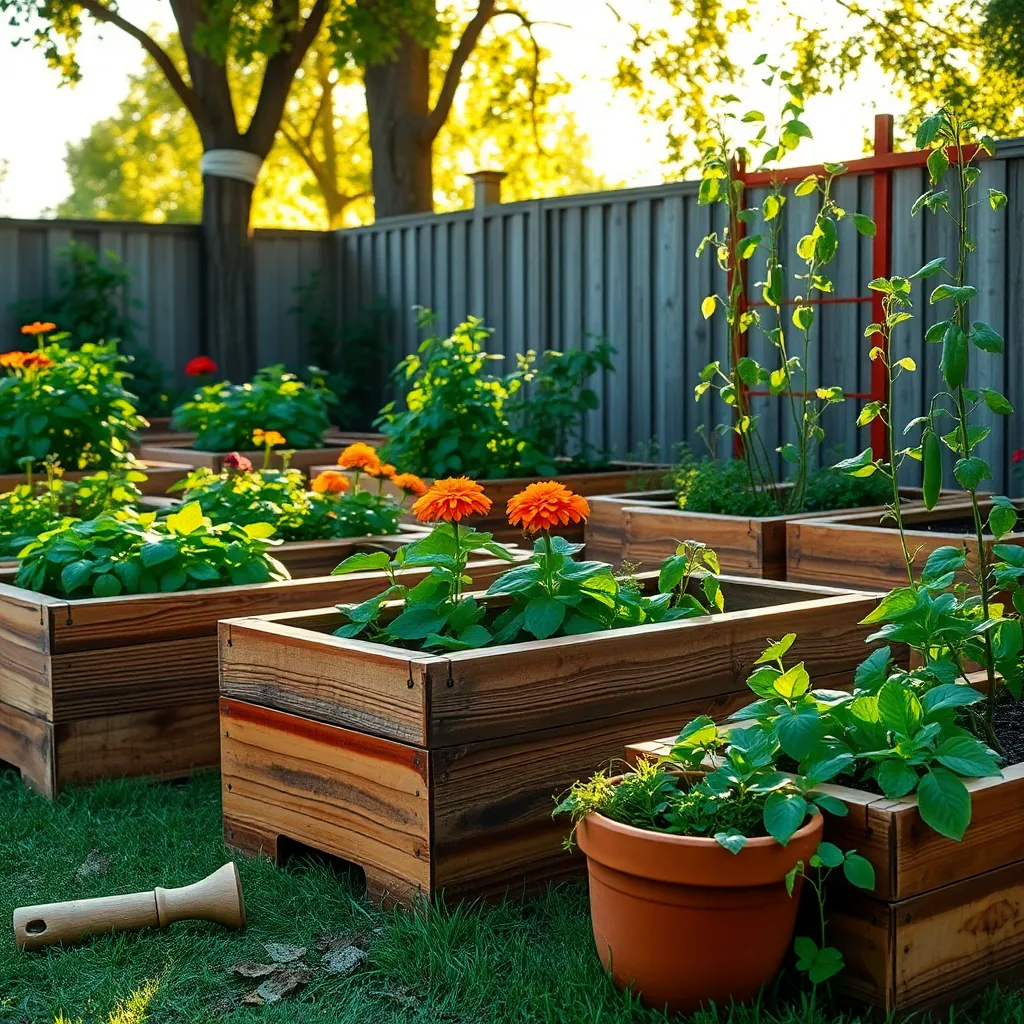
Choosing a modular design plan for your raised garden beds can offer flexibility and ease of maintenance. By using modular components, you can easily adjust the layout and size of your garden beds as your planting needs evolve.
Modular systems often come with interlocking parts that make assembly straightforward, even for beginners. This feature is particularly beneficial if you plan to expand your garden in stages or want to test different plant arrangements over time.
Consider using durable materials like cedar or composite wood for your modular garden beds, as these resist rot and pests effectively. These materials not only provide a longer lifespan for your garden beds but also require less maintenance, freeing up more time for plant care.
For optimal plant growth, ensure that each module of your garden bed has a depth of at least 12 inches. This depth accommodates a variety of vegetables, herbs, and flowers, providing ample room for root development and access to nutrients.
Watering can be more efficient with modular beds, especially if you integrate a drip irrigation system. This method delivers water directly to the roots, reducing wastage and ensuring consistent hydration even during dry spells.
Advanced gardeners might want to experiment with vertical extensions on their modular beds to maximize space and sunlight exposure. These extensions can support climbing plants like beans and tomatoes, allowing you to grow more in limited areas.
Conclusion: Growing Success with These Plants
As we’ve explored, cultivating a thriving garden bed is strikingly similar to nurturing successful relationships. First, we delved into the importance of a strong foundation, just as the right soil mix sets the stage for growth. Next, we learned how variety enriches, whether in plant selection or in embracing diverse perspectives within our relationships. Third, regular maintenance, akin to consistent communication, prevents weeds and misunderstandings from taking root. Fourth, we highlighted the necessity of sunlight and space, reflecting the balance of closeness and independence. Finally, we emphasized patience and time as essential for growth, both in gardens and relationships.
Now, empowered by these insights, take a moment to assess one relationship in your life. Identify one of these concepts to focus on and take a small step towards nurturing it today, whether it’s a heartfelt conversation or planning a shared activity.
Bookmark this article as your go-to resource when you need a reminder of these vital concepts. By doing so, you’re setting yourself up for flourishing relationships that will endure and bloom over time. Remember, the seeds you plant today will yield the relationships you cherish tomorrow.

